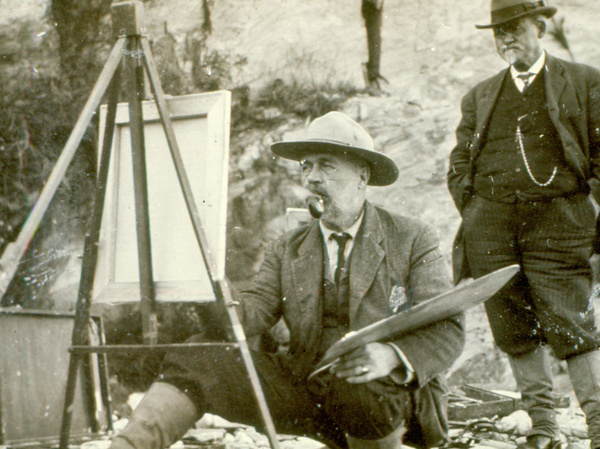The Paintings of John Calvin Stevens
April 21, 2015 - July 19, 2015
Portland Campus Art Gallery

Today John Calvin Stevens is remembered for his distinguished six-decade career as Maine’s leading architect of the Shingle and Colonial Revival styles. From 1880 to 1940, Stevens designed hundreds of homes and buildings throughout Maine, as far south as Virginia, and as far west as Colorado.
Overshadowed by these professional achievements is Stevens’ lifelong passion for painting. His earliest sketches and oils date back to his childhood. By the 1880s he was an active member of the newly formed Portland Society of Art and the Brush’uns. Founded in 1860, the Brush’uns were a talented group of plein air painters who frequented Cape Elizabeth, Capisic, Stroudwater, and the Casco Bay islands on weekends to capture the changing seasons of nature on their canvases.
Many of Stevens’ finest oil paintings were created on these Sunday outings in the company of Charles F. Kimball, George F. Morse, John Bradley Hudson, Jr., Edward S. Griffin, and other contemporaries. Stevens also enjoyed a professional as well as a personal relationship with Winslow Homer, and many of the architects’ paintings reflect their shared fascination with the rocks and surf of the Maine coast.
As part of its fiftieth anniversary celebration, Greater Portland Landmarks, Inc. is joining with the Art Gallery at the University of New England to hold an exhibition of the art of John Calvin Stevens from April through July of 2015. The show will represent the entire range of Stevens’ work, including oil paintings, water colors, architectural renderings, and pen and ink sketches, along with photographs of the artist at work and such personal memorabilia as his paint box.
Drawn from the collections of family members, private collectors, and institutions, this exhibit offers a special opportunity to explore the art of one of the most creative figures in the state’s cultural life of a century ago.

